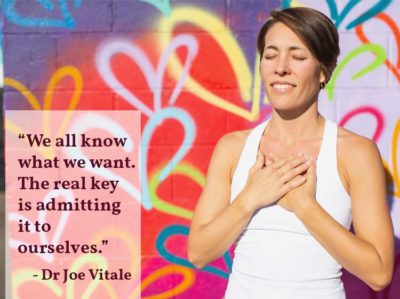 Goals give us a direction in which to point our aim. If time gets squandered, energy gets wasted, and focus goes awry, then your yoga busines goals can remain out of reach. In order to stay on course, it can be extremely beneficial to employ simple strategies. The DUMB and SMART acronyms (which we’ll explore later in this post) are two ways you can keep your eyes on the prize, all while enjoying the journey along the way.
Goals give us a direction in which to point our aim. If time gets squandered, energy gets wasted, and focus goes awry, then your yoga busines goals can remain out of reach. In order to stay on course, it can be extremely beneficial to employ simple strategies. The DUMB and SMART acronyms (which we’ll explore later in this post) are two ways you can keep your eyes on the prize, all while enjoying the journey along the way.
For as long as I can remember, I had the dream of being a writer. My bedroom shared a wall with my dad’s office, and many nights I would fall asleep to the melodic sound of his fingers typing rapidly on the keyboard.
This passion for words on paper started for me with stacks upon stacks of journals. Then, it turned into typed morning sessions, editing content for others, and submitting my own work for a book contract. My dream of writing had naturally evolved into the goal of getting published.
Once I had an offer for It Just Makes Sense–7 Principles for a Joyful and Stress-Free Life, it was time to write, write, write. I blocked off chunks of time for writing. I removed social engagements from my calendar to stay focused on the task at hand. And, I invited the wisdom of others to help refine my efforts and uplift me when I felt stuck or overwhelmed.
The same key strategies I used to accomplish this goal are the same ones I utilize on a daily basis to grow Swagtail. If you have dreams and goals of expanding as a yoga professional yourself (or evolving in any other area of your life), the tactics below can be of great service to get you there. So let’s dive in!
Photo Credit: Diane Nicole Photography
BENEFITS OF GOALS
Despite the variety of shapes, sizes, and differing life experiences, all humans have many traits in common. We all like to feel satisfied in our efforts and to move in a direction that will make us happier. Whether your goal is to make more money or spend more time doing meaningful work, you believe your life will be better by achieving such desires.
Thus goals not only inspire hope for the future, but they can also:
- Create a direction for your life. Identifying a dream or setting a goal provides a broad perspective of where you want to go. Just like planning for a road trip, you can then set your GPS in that direction and get going.
- Highlight the numerous ways to get to the same end. There are many ways to get where you want to go, and when you see the end result, you can identify which route might best get you there.
- Provide structure and organization. You save time and energy when you know which route you’re taking.
- Define expectations of the journey. With a goal in mind, you can discover enjoyable and potentially-challenging situations ahead.
- Increase your clarity. You can identify easily when on track, and notice when off it.
- Enhance your flexibility. With your eyes wide open, you will know when it’s time to make adjustments. And, you’ll be able to do so with confidence and purpose.
Give you purpose. Goals remind you of what’s really important in your life.
Essentially, when you know what you want, and why you want it, your self-confidence increases. You will find it easier to make the tough decisions. You can take calculated risks with self-assurance necessary to reach your yoga business goals. And, you can also feel really good along the way.

Photo Credit: Diane Nicole Photography
GOAL ACHIEVEMENT EQUATION
Before you decide which strategy to utilize in order to reach your yoga business goals, it’s important to understand a very simple formula that makes the achievement of almost any goal possible. For if any one of these components is out of balance, success will be hindered.
FOCUS + ENERGY + TIME = GOALS
Focus is all about your ability to find a single point of attention on what you want. This could be more private clients, increased class attendance, or doubled monthly memberships at your studio. Essentially, focus is keeping your awareness on the specific outcomes you desire.
Energy is the fuel you have–physically, mentally, and emotionally–to reach your goals. It’s your ability to feel good about your goal and remain in personal alignment each step along the way.
Time is the space in which your goals can come to fruition. The general rule of thumb is that the more focus and energy you have toward your goal, the faster it begins to manifest. There is an element of trust that is required in this component because timing will look different for each individual due to the various factors at play in their life in relation to a specific goal. Simply stick with your focus and positive energy, and use your time efficiently as you move forward. This will make each moment of the journey more enjoyable.

Photo Credit: Ricardo Rocha
DUMB GOALS
The DUMB goal strategy is the brainchild of Brendon Burchard (author of High Performance Habits and founder of some amazing online programs). This is an especially good route if you:
- Have lots of ideas, and are unsure where to start
- Are vague about your idea, and want to slowly add clarity to it
- Feel stress around an idea, and you want to get back into alignment with your goals
D = Dream-Inspired
Dreams are similar to intentions. They are broad-brush strokes about how you want your life to be different. They might seem grand in scale, or be a vision that sounds fun and exciting. If you don’t know exactly what steps to take to make your dream come to life at this moment, that’s okay. Your clarity about the details can arise as you move through this process or your own life experience.
- What are my passions and interests?
- What skills do I currently possess?
- If I could spend my days doing anything, how would that time be filled?
- What brings a smile to my face?
 U = Uplifting
U = Uplifting
Not only does this consider how your life will be uplifted as a result of the yoga business goals you put in place, but it includes how your energy will expand as a result of moving in the direction of it.
- What aspects of this dream or goal get me excited?
- How might my life look different each day as I move toward this goal?
- What would I like to do each day if I had just a bit more energy?
- How might my increased happiness spread to my work, relationships, lifestyle?
- How do I hope to encourage the lives of others? My own life?
M = Method-based
It’s highly possible that you’ve had success in the past. You followed certain steps to achieve that end, and you know you can do the same for your newly-inspired dreams. If you’re reaching in an area that is new to you, or filled with uncertainty in the past, there are others out there who have mastered success already.
This part of the goal planning process is about choosing what steps are right for you, and what it will take on each leg of the journey to get to your destination.
- Who has done what I want to do?
- What steps might I need to take to get started?
- What skills will I need to learn to make each step possible?
- Who already has these skills and can help me along the way?
- Are there any formulas I can use or follow to reach my goals?
B = Behavior Triggered
You already have a full life with responsibilities and relationships. Most of those will not go away when you have a new dream or goal in mind. This last element allows you to weave in the smaller steps on the way to achieving your dream while affixing the new habits to events that already happen in your day.
- What habits do I already have in place that serve me?
- Is there anything I do on a daily basis already?
- Could I weave in time to work on my dreams before or after one of those daily habits?
- Are there any behaviors or commitments I could release to make time and energy for my new habits?
[/fusion_code]
SMART GOALS
The SMART goal approach is one you have probably heard about numerous times already. This is a great one to use if you have a general idea in place already and you feel good about it. The SMART plan is now a great way to add clarity and depth to your yoga business goals.
S = Specific
 Specific means you add more and more details to your goal. Answering the following questions can help you add clarity to your vision:
Specific means you add more and more details to your goal. Answering the following questions can help you add clarity to your vision:
- What do I want to achieve?
- In what ways will I know I have achieved it?
- Who will be involved, and what will be different in my life as a result?
M = Measurable
When you set a specific goal, you inherently add a way to measure it. For example, if you want to double the number of private clients you serve over the next 3 months, you will have to start with a clear number of people you work with currently. You can then can track the increase in clients on a monthly basis. Ask yourself:
- What metrics will let me know I’m on track to reach my goal?
- What tools will I use to measure this?
- Will I need to enlist the help of others to keep track of this with me?
A = Attainable
There are certain things that simply are going to be impossible in the short amount of time you have to reach a goal. If you want to transform your business into a global empire overnight, that’s not highly probable. Instead, the attainable component asks you to be realistic with your goal given the time frame you have in mind to reach it. Consider the following questions about your goal:
- Given my time frame, do I have all of the resources necessary to attain this goal?
- Is this goal still possible given any challenges that might stand in my way?
- What distractions, or challenges, might arise?
- If this goal is challenging, what additional people or resources can I enlist for support?
R = Relevant
The goal is to create goals that mirror your values at the moment, and with the goals you have for your larger future. By doing this, it increases the likelihood of reaching your goal, as well as make the journey along the way that much more enjoyable. To ensure your dream is relevant, ask yourself:
- What core values do I possess?
- What values form the basis of this goal/dream?
- Does this goal align with my lifelong goals?
- How might important relationships in my life be affected by my aspirations?
T = Time-bound
If you’ve studied the mind, you will know that the subconscious mind is very literal. If you have the belief that you want to achieve a goal and don’t specify a time frame, the subconscious mind will view you as successful if you accomplish this goal in the next week or in 50 years. It doesn’t care. The subconscious mind only thinks in the present moment.
The linear time you use to function each day is acknowledged by the conscious mind. This uses your decision-making capabilities to move forward. It also helps you set up regular dates to check your progress. The activity with this post allows you to blend both parts of your mind for success. For now, when looking at the conscious aspects of time with your goal, consider:
- By what date would I like to achieve this goal?
- How much time will I need to spend focusing on this goal each week?
- Have I blocked off that time in my schedule to keep me focused?
- What time commitments do I have already that could hinder my progress?
- Will I have to make changes to my schedule to make my goal possible?

Photo Credit: Samuel Zeller
PUTTING IT TOGETHER
Achievement feels good, and moving in the direction of our goals and dreams can be just as exhilarating. If you’re not sure about exactly what you want, or you want to line up with your ideas emotionally, then use the DUMB goal model. If you already have a dream in mind, and you feel good about it, dive more deeply into the details with the SMART goals mindset.
Most importantly, keep in mind that growing your yoga business is all about the journey.
- Focus on how you are showing up each day.
- Bring a joyful attitude
- Think receptive mode, alignment, for it is there that all magic happens.
Join us next week as we share our social media cheat sheet as well as powerful ways to stay grounded during the holiday season.








Leave A Comment